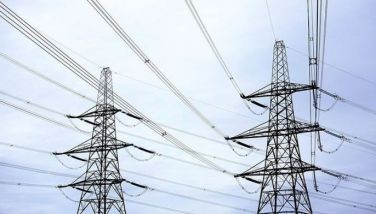The dark side
Two weeks ago, American writer and financial journalist Michael Lewis released the critically acclaimed book “Flash Boys: The Wall Street Revolt.†It focused on how high frequency trading (HFT) took advantage of nearly everyone in the stock market, except the high frequency traders themselves. The day after its publication, the FBI announced that it was investigating HFT, with emphasis on frontrunning, price manipulation and insider trading. However, even before that, both the US Justice Department and SEC were already probing potential criminal activity associated with HFT.
What is HFT?
HFT has been around for some years now, but even law enforcement agencies have a hard time investigating this precisely because of its mysterious and opaque nature. HFT is defined as high speed, automated trading that uses complex algorithms to execute trades based on different market conditions. The best HFT platforms can place trades or post orders in less than a millisecond (second = 1,000 milliseconds, blink of an eye = 100 milliseconds). This allows traders using HFT to buy or sell ahead of other market participants when a particular event occurs. In many cases, this is even used to frontrun clients by placing buy orders right before the client order is transmitted to the exchange.
Is the market rigged?
In his book, Flash Boys, Lewis talked about how investment firms and banks spent millions of dollars just to make information arrive to them a few milliseconds ahead of their rivals. Combined with HFT, this allowed them to place trades ahead of everyone else. Lewis argued that these firms are financial predators who prey on normal investors. He even goes on to say that because of HFT, the market is actually rigged in favor of those who are willing to pay more to gain an innate advantage.
Man vs. machine
Gone are the days when traders shout at the top of their voices to get their orders done on the trading floor. Now, we are competing not just with each other, but against machines as well. Human reflexes have no chance against a computer that can literally enter 100 orders in the blink of an eye. For instance, some people who trade the US complain that whenever they post a buy or sell order, they immediately see another order posted at a better price than what they inputted. Thus, unless they hit the bid or offer, their orders will never get done. Because of this edge in speed that can translate into millions of dollars a year, many investment firms in the US have HFT platforms.
When machines fail – the flash crash
To err is human, but machines are far from divine. In fact, machines were responsible for some of the largest market drops in history. HFT became a very controversial issue after May 6, 2010 – the day of the Flash Crash. On that day, the Dow Jones dropped by 998.5 points, the largest intraday point decline in the index’s entire history. It took the SEC and other government agencies five months to release a report regarding what happened. They came to the conclusion that HFT traders exacerbated that day’s drop as they sold down their positions in a matter of seconds and totally withdrew from the market. What is alarming is how there was so little understanding about the causes behind the Flash Crash. Companies in support of HFT argue that they actually provide liquidity to the market. However, the Flash Crash goes to show how they can also withdraw liquidity at the worst possible time. Seeing how unregulated HFT can actually destroy the market, various government agencies studied exactly how HFT worked and, eventually, launched criminal investigations into the matter.
Dark pools
While investigating HFT, the SEC came across another force that was eroding market quality and transparency. While trading normally occurs in exchanges where both price and volume are there for all to see, there are private exchanges that are not available to the public. Aptly named “dark poolsâ€, these exchanges allowed large hedge funds and investment banks to buy or sell large blocks of shares anonymously without disclosing the size of the trade until it is completely filled. With the transaction price even being agreed upon by market participants without regard to prevailing market prices, any and all semblance of transparency was completely eradicated.
Into the dark
Fortunately, HFT and dark pools are not prevalent in the Philippines yet, but there is worrying news in the horizon. Earlier this year, the PSE announced that starting March 2015, it will be implementing broker anonymity. Currently, when orders are matched, all market participants are able to see all transactions, including identification of the broker and size of the order. Come March 2015, buying and selling will now be broker anonymous. Most investors, especially the small ones, will be left totally in the dark, unable to see the buyers, sellers, or even the size of their orders. This may eliminate small investors and small stockbrokers who study flows in order to make their trades. On the other hand, this will work to the advantage of HFTs, hedge funds, big local and foreign houses which have large flows. Much like Anakin Skywalker who later became the fearsome Darth Vader in the movie “Star Warsâ€, our market maybe moving from the right (light) side to the dark side.
Cover of darkness
Many crimes occur under the cover of darkness because the lack of light allows criminals to carry out nefarious deeds without being seen. With broker anonymity being implemented in less than a year, our stock market is moving from being transparent and fair to dark, opaque and shadowy. Much like a dark pool, investors will not know who their counterparty brokers are and brokers will not know who they are trading with. Moreover, frontrunning may become more prevalent as investors will not be able to see if their broker bought first for themselves before executing the client’s order. This may lead to less people participating in the stock market, fostering distrust for equities. This image could only get worse when broker anonymity is finally implemented.
For some eyes only
In the dark, only a few eyes can see, and that is the scariest part. Once broker anonymity is implemented, there will be a few privileged individuals in the PSE, acting as regulators, who will have very precious information not available to others. They will be able to see what everyone else cannot see. Call us cynical, but this very lucrative data will be very difficult to keep only to a few eyes. It may be naïve to believe that putting CCTVs and banning cellphones will prevent this data from being seen by a few nefarious eyes.
Prevalent practice is not best practice
The PSE has said that they are instituting broker anonymity because they are following best practices. However, we believe that prevalent practice in big markets like the US is not necessarily the best practice. No wonder there is now an uproar against dark pools, HFTs and lack of transparency in trading in the US. Moreover, we have examples of markets that have practiced transparency, unlike the US, such as Hong Kong, Spain and Indonesia, among others.
Spain’s transparency is very similar to our policies right now where one can see the buyers and sellers for a particular stock whenever an order is executed. HongKong, one of the most liquid markets in Asia, also does not practice broker anonymity. In fact, when an order is entered, one can already see which brokerage posted it even though it is not yet executed. Another example would be Indonesia, which took transparency a step further. Not only do they show the buyers and sellers, but upon execution of an order, one will also know if his counterparty is foreign or local. Note how all 3 of these markets have daily trading volume at least 10x larger than that of the Philippines.
Small investors revolt
Recently, momentum stocks in the US, which are mostly biotech, technology and small cap stocks, fell sharply, with many dropping more than 20% from their highs. One of the reasons behind this is the growing distrust of smaller investors who tend to trade momentum stocks. It is becoming clear to them that small retail investors are now at a disadvantage against large investment firms that use HFT, computerized algorithms and dark pools. Thus, many small investors shunned away from investing for fear of being duped again.
May the force be with you
We believe it is better to have a level playing field where everyone sees the same thing than a stock market ruled by dark pools, algorithms and machines where some participants will have a distinct and innate advantage. It is better for all investors, big and small, to see exactly what is happening rather than have a market which hides and camouflages orders placed by machines and hedge funds, much like the dark pools in the US. We also believe that a more transparent market will work to the benefit of everyone, be it brokers, clients, and government agencies.
To the PSE and SEC, we leave you with these parting words of the Jedis from the movie “Star Wars†– “May the Force be with you.â€
Please visit our online trading platform at www.wealthsec.com or call 634-5038 for detailed stock market research. You can also visit www.philequity.net to learn more about the Philequity Fund and view our archived articles. You can email us at feedback@philequity.net for feedback on the Philequity Corner articles.
- Latest
- Trending



























